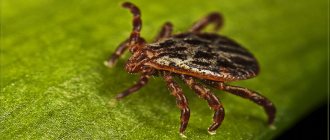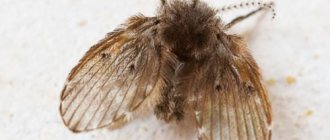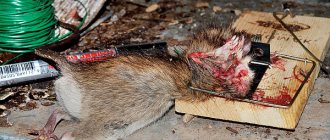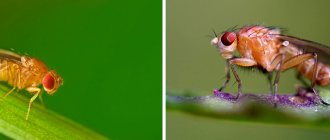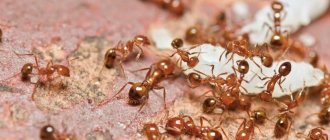Where do they come from?
Gamasid mites are a superfamily of mites from the order Parasitiformes from the subclass Mites and the class Arachnids. The group contains approximately 20 families and 300 genera, which are capable of living everywhere.
A significant part of the species leads a predatory lifestyle, being omnivores or attacking small invertebrates. The remaining species become parasites and consume the blood of mammals, birds and reptiles.
Gamasid mites are tiny creatures with a body length of 0.2 to 3.5 millimeters. The body is ovoid or oval in shape, and is also colored yellowish or brownish. But if the parasite has already drunk blood, it turns scarlet. Externally, the creature is distinguished by a body divided into two parts, which consists of:
- Torso with chitinous cover.
- Oral apparatus.
There are 4 pairs of limbs on the tick's body, and the mouthparts are a small proboscis that is capable of piercing the skin of victims. Initially, the parasite pierces the skin with sharp chelicerae, and then touches it with pedipalps. Respiratory processes are carried out through tracheas located on the side of the body.
The development process of gamasid mites can be divided into three stages:
- Egg formation.
- Transformation into a larva.
- Nymph I (protonymph).
- Nymph II (deuteronymph).
- Adult tick.
The fertilization process is carried out as follows: male representatives fix a spermatophore (sac with sperm) to the female’s body through chelicerae. Some species reproduce through parthenogenesis, i.e. females lay eggs, from which viable larvae are then formed. There are also viviparous varieties of gamasid mites. The development of their eggs takes place inside the female’s body, after which a larva or protonymph emerges from it. Due to the impressive size of the eggs, the female cannot lay more than one egg at a time.
At different stages of development, the tick looks completely different. If the larvae have only six legs and are not able to eat food, then the protonymph also develops a fourth pair. In addition, it has a whitish color, soft covers and demonstrates increased activity. Deuteronymphs are covered with a dense crust and are characterized by a yellowish or brown tint.
Signs of rat tick bites
The favorite localization of bites is in places with the most delicate and thin skin. Most often, bites can be found in the following areas:
- under clothing that fits tightly to the body: belt area, collar area, cuffs;
- depressions on the body: armpits, navel area, ears;
- in skin folds: inguinal folds, on the abdomen, under the mammary glands.
Symptoms of a tick bite include the following:
- sensation of something crawling across the body, moving;
- itching of the skin in the area of the bite;
- skin hyperemia;
- a black or brown dot if the parasite has attached itself to the body;
- a red dot if the tick has fallen off;
- rashes on the skin;
- rise in body temperature to individually high numbers.
It is also useful to read: Consequences of a tick bite in humans
Habitat
Such small creatures are characterized by an unpretentious nature and omnivorous nature. Many species are predators that eat any biological products. When choosing places of residence, ticks settle in the soil, cracks in the bark, under leaves and in other hard-to-reach areas. They often destroy small invertebrates, larvae and all kinds of organic matter. Despite the wide variety of species and forms of the parasite, most of them do not pose a danger to humans.
However, some individuals have learned to lead a parasitic lifestyle, adapting to large insects, birds, and even domestic animals. Such parasites are capable of transmitting pathogens of dangerous diseases and pathologies, being a threat not only to animals, but also to people.
And in order to effectively get rid of these pests, it is important to fully know about their lifestyle, preferences in choosing places to live, as well as other features. It is important to understand the existing types of such creatures in order to be able to classify them and find effective treatment methods.
Main varieties
In nature, there are several varieties of gamasid mites. These include:
- Mousey.
- Rat.
- Chicken mite.
The first variety establishes colonies on house mice, where there is a favorable environment for reproduction and feeding of offspring. However, such a tick is not afraid to attack people, and it can carry a dangerous disease - vesicular rickettsiosis.
Rat species prefer the following food sources:
- Blood of black and gray mice.
- Blood of house mice.
- Blood of any other rodents.
As carriers of all kinds of infections and diseases, rat mites pose a great threat to humans. They often suffer from vesicular rickettsiosis, Q fever, and hemorrhagic fever. In addition, these parasites can become carriers of dangerous viruses such as tick-borne encephalitis, lymphocytic choriomeningitis and others. Moreover, they can carry plague and tularemia.
The chicken mite eats the blood of domestic and wild birds. Upon contact with humans, the parasite contributes to the development of dermatitis, which entails dangerous consequences for health. This species makes its home in bird nests, attacking them while eating. When mites spread massively, they can cause enormous damage to poultry production, reducing egg production and reducing body weight gain. In addition, the activity of these parasites causes the death of chickens.
In addition to the above types of ticks, there are also rarer, little-studied, but no less dangerous representatives. Among them is the varroa mite, which has an impressive size and can be a carrier of the most dangerous diseases. The female grows to 1.8 mm in width and 1.1 mm in length. The tick is characterized by a specific body color (in males the body is milky white and small, and in females it is bright brown). Moreover, the life expectancy of females can reach several years, while males are not able to live longer than two to three weeks.
When choosing places of residence, parasites give preference to almost any area, with the exception of the cold, remote areas of Antarctica. The only host of this species is bees, as well as insect larvae. Leading a parasitic lifestyle, mites settle in the bodies of bees and honeycombs, sucking beneficial biological fluid from the insect’s body. As a result, this negatively affects honey production and also causes the death of entire bee colonies. Such ticks do not pose a great threat to humans.
As for the snake mite, it is characterized by a small size from 0.2 to 3.5 mm, as well as an oval or ovoid body. In terms of external features, the parasite resembles representatives of the chicken, mouse or rat form.
Such parasites live in terrariums or zoos. They can also be found in private buildings, but individuals are not found in the wild. Parasites consume the blood of snakes, although they do not refuse the opportunity to attack a person. As with bird mites, these creatures have highly toxic saliva that contributes to the progression of dermatitis.
The gamasoid mite often attacks reptiles, causing depletion of the body and even death. In addition, this type of parasite is capable of transmitting the causative agent of snake septicemia.
Danger to humans: what diseases can cause?
Even a massive attack by gamas ticks cannot lead to serious blood loss, but this is not the problem with the bites of these parasites. Much more seriously, even a single bite can cause a severe allergic reaction, including in people with no history of allergies.
In most cases, an allergy to the bite of gamas ticks occurs moderately in the form of local urticaria (at the site of the bite) or angioedema (Quincke's edema). Some patients, especially those who are allergic to blood-sucking insect bites (for example, culicidosis), develop a terminal form of the allergy - anaphylactic shock, generalized urticaria, or laryngeal edema.
With a terminal form of allergy, death can occur even before the ambulance team arrives (which should arrive 5-10 minutes after the call). Fortunately, such severe forms of allergies are relatively rare.
Stages of development of gamasid mites
Also, these parasites can cause specific human diseases, namely:
- Rat mite dermatitis.
- Snake mite dermatitis.
- Mouse mite dermatitis.
- Bird mite dermatitis.
- Dermanissiosis.
In addition, these parasites can cause other dangerous infectious and inflammatory diseases, namely:
- typhus;
- plague (the probability of infection is extremely low);
- vesicular rickettsiosis.
How to get rid of gamas ticks in an apartment?
To rid an apartment of gamas ticks, it is necessary to eliminate unsanitary conditions, if any. You should clean the walls of mold and take out the garbage, which many often “store” in the corners of the rooms. You should also not leave bags of garbage in the hallway or vestibule.
Gamasid mite under a microscope
If there are holes in the apartment through which rats can enter, they should be closed. This is especially true for residents of the first floors of multi-story buildings, to which rats can enter from the basement of the building or through the sewer system (less often through ventilation).
The balcony should be repaired and all rotten pieces of wooden supports/frames that could harbor ticks should be removed. Also, in old buildings, due to rain, over time the walls begin to loosen in pockets. These places should also be corrected, although the likelihood of gamasid mites being found there is quite low.
As is the case with the destruction of any other household ticks and bedbugs, if you have or suspect the presence of gamas ticks in the apartment, you should clean all existing bedding. Cleaning should be carried out by steaming the laundry at temperatures above 50 degrees Celsius.
What is their danger?
Gamasid parasites are capable of parasitizing various domestic animals. However, adults can also suffer from parasite bites, resulting in a rash and itching. With numerous bites, the patient develops dermatitis, which has the scientific name “gamazoidosis”. Along with bites, various infections and pathogens appear in the body. As for the ways ticks can enter your home, there are plenty of them. This primarily occurs when sick pets visit the building.
People often mistakenly confuse tick-borne dermatitis with scabies. Therefore, when choosing a treatment method, it is important to first make a diagnosis and also consult with a specialist. The fact is that certain products and preparations are intended only for dermatitis and are not suitable for other diseases.
It is not difficult to verify the presence of tick-borne dermatitis on the skin. This will be confirmed by the absence of scabies in the skin. When dealing with treatment, it is better to start with symptomatic methods. To do this you need to do the following:
- Take a hot shower to remove parasites from skin surfaces.
- Treat the skin with special ointments or oils. To reduce itching, you can use folk solutions, including chamomile decoction or string tincture. In rare cases, the patient is prescribed oral medications, for example, antihistamines.
Damage caused by ticks
Gamasid mites parasitize many domestic animals. Tick bites also cause harm to humans, causing rashes and itching. Multiple bites lead to dermatitis. Dermatitis caused by gamasid mites is called gamasoidosis. In addition, tick bites can introduce pathogens of various diseases into the human body. Gamasid mites usually enter premises where people live along with domestic or wild animals.
How the premises are treated
If there are too many hemazoid mites in the building or the residents begin to notice the first manifestations of dermatitis, it is imperative to seal all the cracks in the room. Using cement mortar, cracks under window sills, baseboards and at pipe entrances should be treated.
If small rodents contributed to the infection, measures must first be taken to destroy them. We are talking about desacralization, as well as deratization of the building.
The first procedure fights ticks and involves the use of special preparations - acaricides, which effectively destroy small insects. To achieve maximum results in the fight against ticks, it is better to apply acaricides at temperatures above 20 degrees.
When treating household buildings, you can make do with liquid insecticides that are approved for general use. Such compositions should be applied to the most vulnerable areas where there is a high probability of rodent entry. We are talking about bathrooms, kitchens and other parts of the house with high humidity.
If pets live indoors, their bedding and sleeping areas need to be treated. It is important for owners to completely get rid of ticks on animals using proven zoological shampoos or insecticides.
If a domestic building is infected with chicken mites, which happens on the first and last floors, it is important to remove the nests of small birds (swallows, sparrows and pigeons), since parasites that are life-threatening to pets and people can breed in them. If the infection occurs in the poultry house, it should be treated with acaricides.
If you want to protect your pet from tick attacks, you should try treating its fur with essential oil before going outside. As an example, you can take clove, lavender or tea tree oil, which is dissolved in water and used to spray the animal.
Remedies for rat tick bites
Before using any remedy for tick bites, you must directly remove the tick itself. To do this you need to do the following:
- steam the affected area, soften the skin with cream;
- disinfect the skin by treating it, for example, with alcohol, Chlorhexidine, Septocide;
- remove the tick using a special twister;
- consult a doctor.
After removal of the parasite, antihistamines are prescribed (for example, Cetrin, Loratadine). Medications with antiparasitic and antiseptic effects are also used.
Benzyl benzoate ointment 10%
It is an antiparasitic drug used topically. Available as an ointment in metal tubes or glass jars.
The duration of treatment is about 4 days.
The first treatment with ointment is done in the evening before going to bed. The skin of the arms, torso, legs, including the soles and fingers are treated. Treatment is carried out on clean skin. After treatment, you should put on clean underwear and clothes. In the next 2 days, it is necessary to take a break from therapy, and it is forbidden to wash off any remaining medication from the skin. On the 4th day in the evening, repeated treatment is carried out, similar to that on the first day. On the 5th day the ointment is washed off.
Sulfuric ointment
It is an anti-itch agent and is used externally. The product is released in the form of an ointment in metal tubes.
The duration of treatment is from 7 to 10 days.
The drug is applied in a thin layer to the affected areas of the skin 2-3 times a day for the specified duration of treatment. After completion of therapy, taking a bath is allowed; changing underwear and bed linen is necessary.
Wilkinson's ointment
It is a product for external use, which contains tar, sulfur, and naftalan oil. Has anti-inflammatory, antiseptic, antiparasitic effects. The product is produced in the form of an ointment in tubes and glass jars.
Used externally. Once a day, the ointment is rubbed into the skin of the entire body, excluding the face and scalp. Duration of treatment – 3 days.
It is also useful to read: Staloral “Mite Allergen”
Preventive measures
In order not to wonder about effective control of ticks, you need to follow a few simple preventive measures. They must be carried out without fail by people who live in rural areas. It is important to regularly treat the chicken coop with powdered acaricides and prevent rodents from entering the building.
If gamas mites appear in your apartment, you need to know about more thorough measures to combat them. And although in urban conditions such creatures appear much less often than in a village or anywhere else, you should not forget about some hygiene rules and precautions.
To avoid an unpleasant situation, it is important to maintain the cleanliness of the premises, as well as the resting and entertainment areas of pets. After walking outside, animals need to be washed and treated with special products. As a regular tick prevention, it is recommended to wash your pets with flea shampoo. It is also important to prevent the possible penetration of annoying rodents into the building, which often become a place of residence for parasites. Following simple recommendations can protect your building from such an unpleasant problem as the appearance of ticks.



